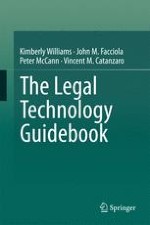2017 | OriginalPaper | Buchkapitel
10. Authenticity
verfasst von : Kimberly Williams, John M. Facciola, Peter McCann, Vincent M. Catanzaro
Erschienen in: The Legal Technology Guidebook
Aktivieren Sie unsere intelligente Suche, um passende Fachinhalte oder Patente zu finden.
Wählen Sie Textabschnitte aus um mit Künstlicher Intelligenz passenden Patente zu finden. powered by
Markieren Sie Textabschnitte, um KI-gestützt weitere passende Inhalte zu finden. powered by
